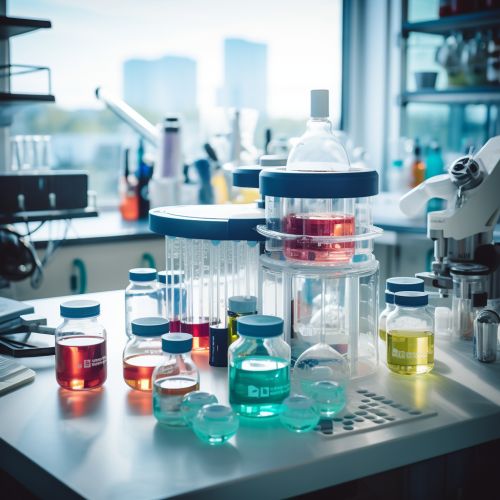Recombinant DNA
Introduction
Recombinant DNA (rDNA) is a form of artificial DNA that is created by combining two or more sequences that would not normally occur together. Through the introduction of relevant DNA into an existing organismal DNA, an organism can be genetically modified to express the foreign gene. The process of creating recombinant DNA relies on the use of restriction enzymes and DNA ligase.


History and Development
The concept and practice of recombinant DNA was first articulated and demonstrated by American biochemists Stanley N. Cohen and Herbert W. Boyer in 1972. They used Escherichia coli, a common laboratory bacterium, and a plasmid, which is a small, circular piece of DNA that is separate from the chromosomal DNA, as their model system.
Methodology
The process of creating recombinant DNA involves multiple steps, each requiring specific enzymes and chemicals. The first step is the isolation of the donor and vector DNA. The donor DNA contains the gene of interest, while the vector DNA is typically a plasmid that will carry the donor DNA into the host organism.
Applications
Recombinant DNA technology has a wide range of applications in different fields. In medicine, it is used in the production of insulin, human growth hormones, and vaccines. In agriculture, it is used to create genetically modified organisms (GMOs) that are resistant to diseases, pests, or environmental conditions.
Ethical and Safety Considerations
The use of recombinant DNA technology has raised several ethical and safety concerns. These include the potential for creating harmful organisms, the impact of genetically modified organisms on the environment, and the ethical implications of genetic modification.
